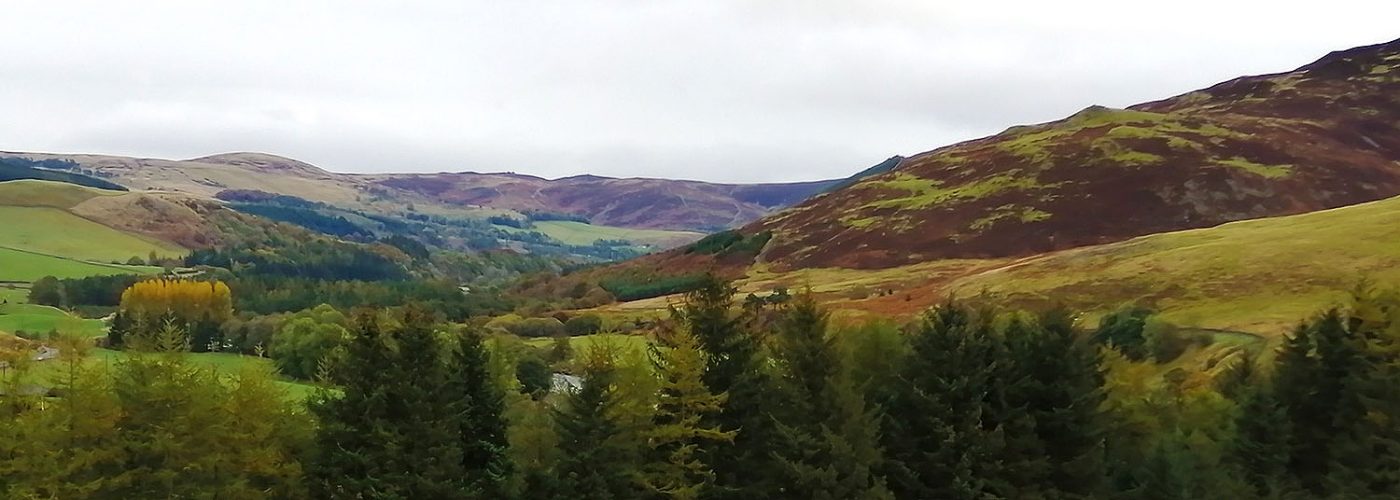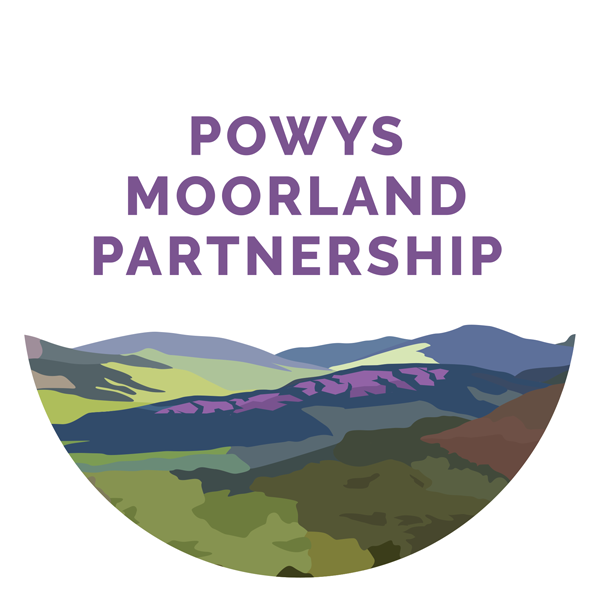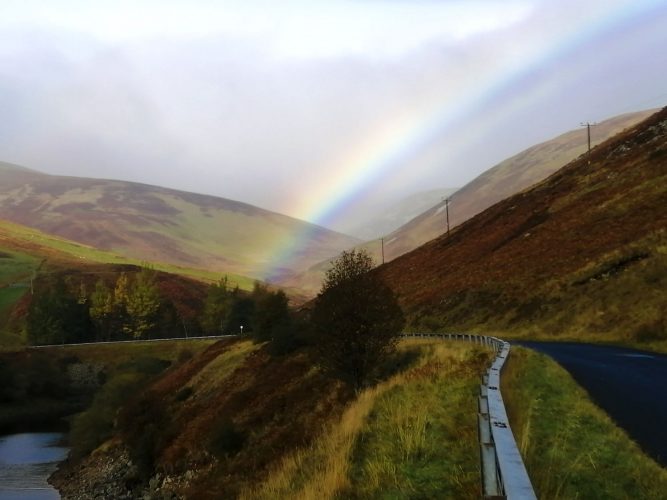Working collaboratively at a landscape scale is something that the Tweed Forum – based on the Scottish borders with 20% of the land being North Northumberland England – has been doing for over 25 years.
From peatland restoration – which stores carbon for 1000s of years – to tree and hedge planting, pond creation, the Tweed Forum is looking at a variety of practical ways to hold back water, capture as much carbon as possible but working closely with the farmers & landowners at all times so that rural communities can play a core part of the new opportunities as they emerge.
The Scottish Government’s Climate Change plan is to restore 250,000 hectares by 2032. It also has a Land Use Strategy which is looking at balancing conservation of natural resources essential for human life. It believes that if we continue to put more pressures and demands from the land we have some difficult choices ahead if we and future generations are to continue to benefit from them.
With over 600,000 trees planted so far in the Tweed catchment along with using natural features of the landscape such as ponds and leaky barriers to reduce flood risk downstream – known as Natural Flood Management (NFM) – the Tweed Forum is getting the attention of Government and other key stakeholders across Scotland as it demonstrates its excellent relationship with the people on the ground which is critical to help reduce climate change challenges.
Through a rigorous monitoring programme conducted by Dundee university, the project will be able to test the effectiveness of their work on local towns such as Peebles, Eddleston, Hawick, Selkirk where flooding damage has cost dearly in the past.
Working with hundreds of farmers throughout the catchment, the team are fully immersed in getting the right relationship with the farmers, landowners, and getting agreed actions on the ground and working with all other users so that work is connected and coordinated and linked up sensibly. Farmer relationship is not surprisingly top priority which without their support the project simply could not connect up.
From redesigning parts of the water flow which has changed routes with some straightened over the years, along with agricultural drainage when land use was more about production, there are a variety of projects along the Tweed to look at the challenges which we all now face. The catchment has less fish, less birds, less biodiversity which calls for a different approach to see what can be restored by using the land differently through natural processes. Removal of invasive species is all part of the restoration work so that habitats can be created or come back to life, but ultimately the aim is to raise the ecological status of the river by generating solid evidence of the impact, cost and benefits of working with natural processes at a catchment scale.
With similarities of how the landscapes look visually between here and mid Wales along with the same issues of loss of biodiversity, failing water quality, struggling rural communities, increase risk of flooding downstream, we believe there are huge opportunities to adopt similar approaches to the Tweed Forum to restore our habitats and find out what approaches could slow down the effects of climate change and what new opportunities might emerge as a result.
We have a lot to learn but mistakes are important to notice and maybe we can fast track to the best easier wins from the wealth of experiences from the Tweed Forum, but more importantly maybe is getting key stakeholders to agree a vision on our landscape and that all takes time.
Catherine Hughes, Powys Moorland Partnership facilitator


